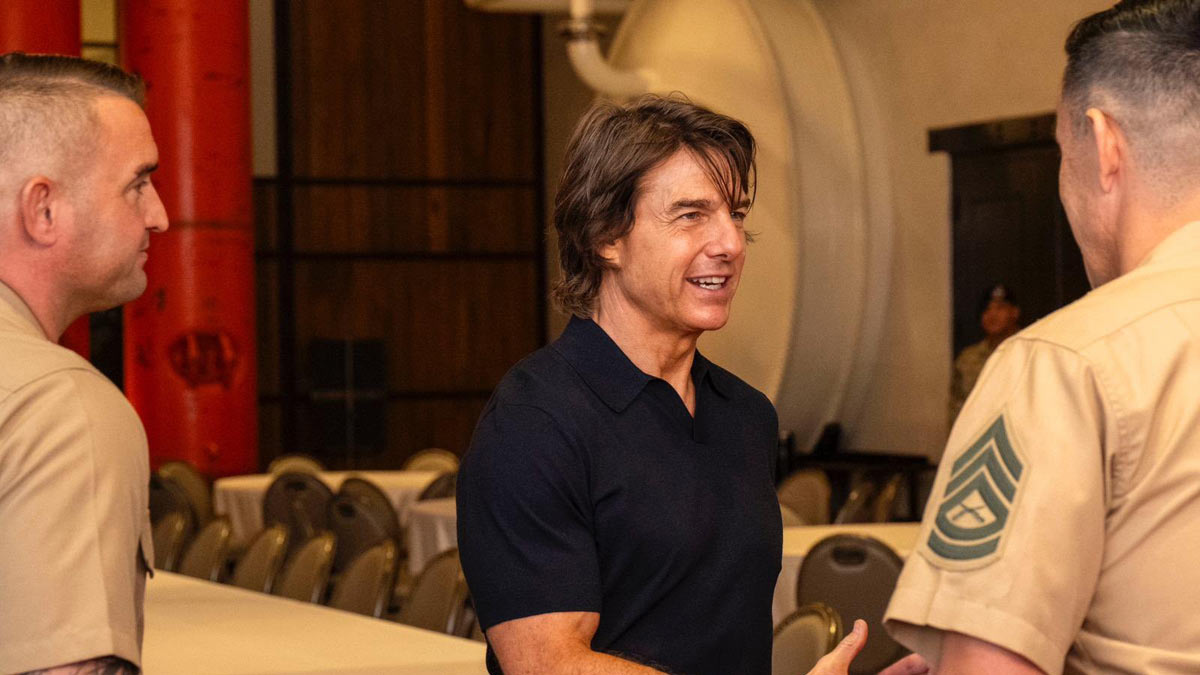How Tom Cruise used a real US Navy aircraft carrier, jets for 'Mission Impossible: The Final Reckoning'

The US Defense Department (DoD) and Hollywood have a well-established and mutually beneficial partnership. This nearly a century-old relationship helps both sides—for Hollywood, this leads to an accurate portrayal of military assets and stories, and for the DoD, such a relationship ensures that sensitive military information is not disclosed to the public. This tie-up—Military-Entertainment Complex—has shaped the depiction of the US military in popular culture, in films such as Crimson Tide and Top Gun, as it grants Hollywood access to real military equipment, personnel, and technical advisors in exchange for a level of script oversight to ensure accuracy and a positive portrayal of the armed forces.
Every branch of the US armed forces, including the Coast Guard, has its own Hollywood liaison office.
The latest collaboration between the DoD and Hollywood was for the eighth installment of the Mission Impossible franchise, Mission Impossible: The Final Reckoning.
The Tom Cruise-starrer needed heavy-duty assets from the Air Force, Navy and Marine Corps, including an aircraft carrier.
In one of the scenes in the film, directed by Christopher McQuarrie, the defence secretary asks the President, "You gave him an aircraft carrier?" The aircraft carrier used for the scene was USS George H.W. Bush.
READ MORE: 'Mission: Impossible - The Final Reckoning' review: Tom Cruise pulls off his craziest, heaviest, and most heartwarming mission
According to DoD, several scenes were filmed aboard the carrier, including aerial flight sequences, a scene on the navigation bridge, one involving the landing of a C-2 Greyhound cargo aircraft on the flight deck and another involving the Ospreys. However, no major action sequences were filmed on the carrier.
The highly versatile tiltrotor aircraft, CV-22 Osprey, which is capable of performing missions that would otherwise require both rotary and fixed-wing aircraft as they can tilt their rotors from a vertical position (like a helicopter) to a horizontal position (like a fixed-wing airplane), were used in the film. These were seen flying in and around USS George H.W. Bush.
The US Air Force flew two US Special Operations Command CV-22 Osprey helicopters, based at Souda Bay, Crete, to Long Cross, England for the filming. Although the scenes involving these aircraft lasted only a few minutes, a dozen SOSCOM (Special Operations Command) Osprey crew members worked with the cast and crew as advisors to make the depictions accurate.
Sara Francis, the project officer for the Air Force Entertainment Liaison Office, said, "They worked with the two actresses portraying pilots to make sure they had the dialogue correct, giving them a better feel for what their role is."
Navy Lt. Cmdr. Matthew Stroup, the George H.W. Bush Carrier Strike Group lead for support to the film, said all parties were very much aware of the risks associated with filming. The aircraft career even hosted the cast and crew for a few days during a deployment off the coast of Italy.
The film also features exterior shots of the Virigina-class submarine USS Rickover, although in the film it is called USS Ohio—the largest ballistic missile submarines ever built by the US.
Navy Cmdr. David Daitch explained that they could use a Virginia-class submarine for the exterior shots as the "Ohio has both the old school periscope, and then it's got the new photonics (mast) like what you will see on a Virginia-class. So, in this case, we could use a Virginia-class for the exterior shots that we needed."
USS Ohio has a classic cylindrical, teardrop-shaped hull, and is painted in U.S. Navy matte black, like USS Hyman G. Rickover. An Ohio-class submarine was also part of the 1995 film Crimson Tide.
Tramell Tillman, who plays the USS Ohio's Capt. Bledsoe in the movie, worked closely with submarine captains to get the part right.
"The movie does a great job showcasing how our US Navy powers maritime dominance and delivers peace through strength for our nation," said Director of the Naval Nuclear Propulsion Programme Admiral William Houston.
Entertainment